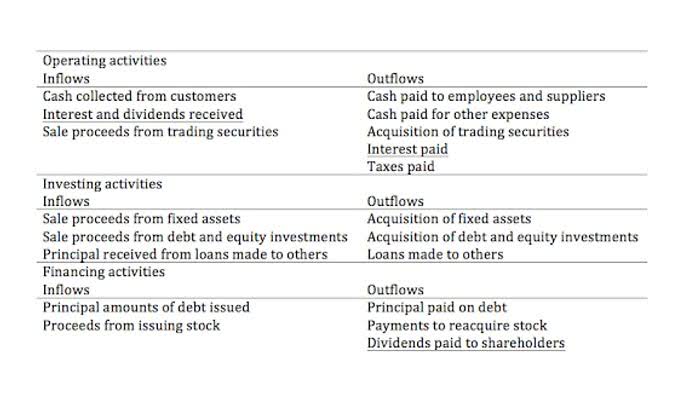
Upon completion of the project, CIP is reclassified to the appropriate fixed asset account like buildings or equipment, and capitalization stops. Capitalized costs include materials, labor, interest and other costs to ready the asset for use. Yes, construction in progress costs are capitalized by recording them as an asset on the balance sheet. Capitalizable costs include materials, labor, equipment costs and any other costs necessary https://www.bookstime.com/ to bring the asset to a usable state. As costs are incurred, the CIP asset account is debited and accounts like cash, payables etc are credited. No depreciation expense is recorded until the asset is placed in service upon completion of construction.
- It’s also crucial when a company needs to secure bank loans, demonstrate bond capacity, and receive audit and assurance services.
- Complex construction projects involve numerous stakeholders, supply vendors, streams of expenses, and documentation.
- Construction accounting software solutions offer features such as real-time cost tracking, automated reporting, and integrated project management capabilities.
- Effective construction cost tracking is a crucial aspect of construction in progress (CIP) accounting, which is essential for accurate debit and credit management.
- This ensures that the costs are properly recognized, and the fixed assets are appropriately valued on the company’s balance sheet.
Transitioning to Fixed-Asset Accounts:
1) On March 11, 2021, Business A received a $100,000 bill from Builder’s Warehouse for construction materials. Such advancements structurally improve traceability, accountability, and uniformity – enabling more consistent CIP accounting. Unplanned costs from price changes or delays affect CIP accuracy and profitability.

Depreciation Expense Account Vs. Allowance for a Depreciation Account
Implementing a centralized communication platform, such as Slack or Microsoft Teams, can facilitate better coordination and information sharing. Regular meetings and updates are essential to keep all stakeholders informed about project progress, potential issues, and resource accounting needs. This collaborative approach helps in identifying and addressing problems early, thereby reducing the risk of delays and cost overruns. Ready-to-use templates for managing bookkeeping, financial reporting, and tax filing.
- This guide will break down its meaning, importance, and practical applications while addressing common challenges and solutions.
- Although these two important roles are sometimes viewed as interchangeable there are important differences between them.
- Regular reviews also help to identify any potential issues or discrepancies in the CIP accounts, allowing companies to take corrective action if necessary.
- It means that the costs of a construction project must be accurately recorded and reported, and any changes in the status of the project must be reflected in the financial statements.
- Large-scale construction jobs can take years to complete and often require hundreds of separate expenses.
Industry Advancements
For businesses navigating the complexities of accounting construction in progress (CIP), Plumb offers unparalleled expertise. In the world of construction and large-scale projects, managing finances can be a complex and challenging task. One critical aspect that often comes into play is accounting construction in progress (CIP). Accounting construction in progress refers to the accounting process used to track and report the costs of a construction project as it progresses over time.

The account Construction Work-in-Progress will have a debit balance and will be reported on the balance sheet as part of a company’s noncurrent or long-term asset section entitled Property, plant and equipment. As the project progresses, the costs accumulated in the CIP account are gradually transferred to the appropriate fixed asset accounts, such as buildings or infrastructure, depending on the nature of the project. This process is known as capitalization, and it confirms that the costs of the project are accurately reflected in the company’s financial statements. Construction projects often involve significant investments and can take months or even years to complete.
- Tools like Procore, Sage 300 Construction and Real Estate, and Viewpoint Vista offer robust features tailored to the unique needs of construction projects.
- Another significant aspect of managing CIP in a multi-project environment is maintaining accurate and up-to-date financial records.
- Ongoing cost monitoring and control are essential to ensure projects stay within budget, leveraging accounts payable tracking to manage cash flow.
- Detailed documentation—receipts, invoices, records—is crucial for accuracy and audit readiness.
- Upon project completion, the CIP account is transitioned to the appropriate fixed-asset account.
- This capitalization of costs can lead to a substantial increase in total assets, which in turn affects key financial ratios such as the return on assets (ROA) and the debt-to-equity ratio.
Software solutions like QuickBooks Enterprise or Oracle’s JD Edwards EnterpriseOne can provide the necessary functionality to manage complex financial data across multiple projects. These platforms allow for real-time tracking of expenses, revenue recognition, and financial reporting, thereby enabling better decision-making and financial control. Allocating costs is a crucial aaccountingspect of construction-in-progress (CIP) accounting. It involves assigning expenses incurred during a construction project to the appropriate asset account systematically and accurately. CIP accounting is important to a construction company’s accounting system software because it allows businesses to track the progress of a construction project and monitor its costs. By keeping accurate records of expenses, businesses can ensure that projects are completed within budget and on time.

As these solutions gain maturity, they are likely to be game changers in elevating CIP accounting and financial control. 5G and IoT – Connected devices and equipment provide continuous streams of granular operational data to optimize workflows, resources, and expenses. Developers of office spaces, hotels, and retail complexes cip accounting often don’t have regular operating revenue until properties are leased or sold.

Construction Work-in-Progress Accounting Process
This is because, as stated previously, some companies may store costs in the account longer than they should to avoid depreciation and to misrepresent profits. Understanding CIP accounting is essential for project managers, accountants, and stakeholders to make informed decisions and maintain financial health throughout the project’s lifecycle. Imagine Business a plans to expand its office building to accommodate more employees. Their accountant initiates a Construction-in-Progress Office Expansion asset account to document construction expenses. Moreover, auditors often scrutinize construction-work-in-progress accounts due to their susceptibility to manipulation.
